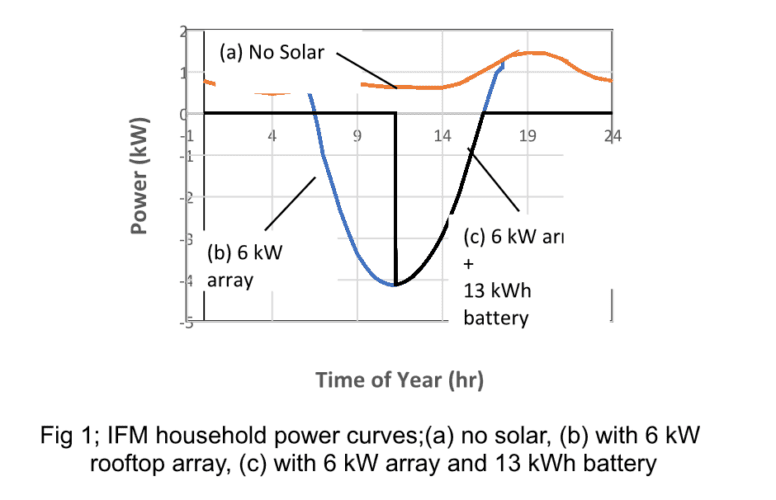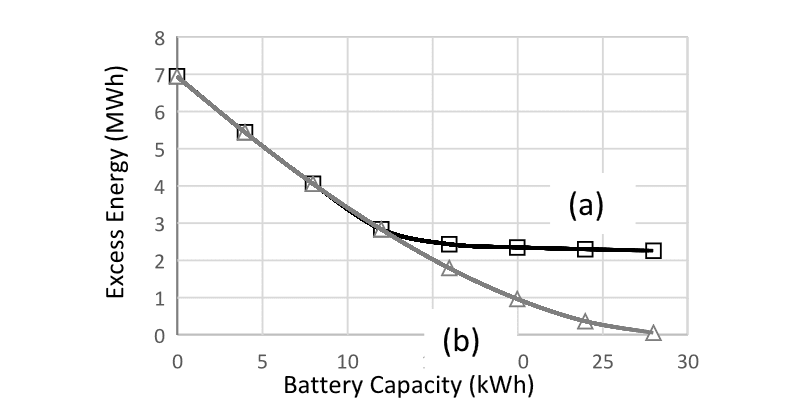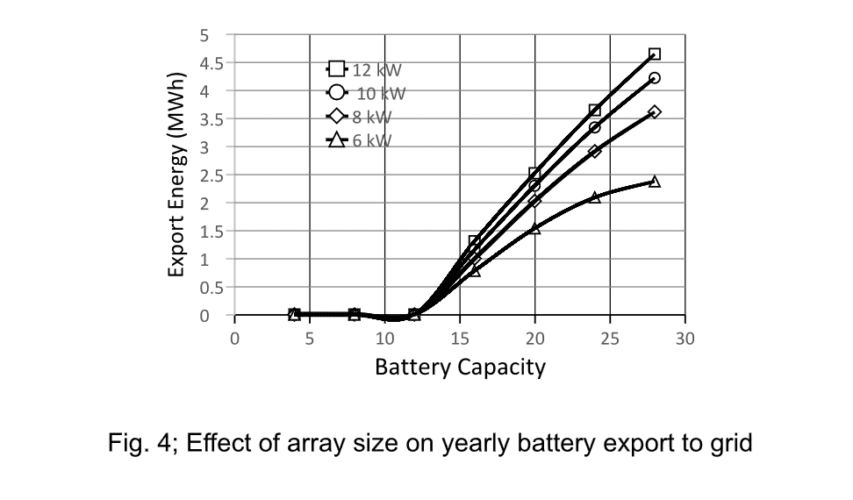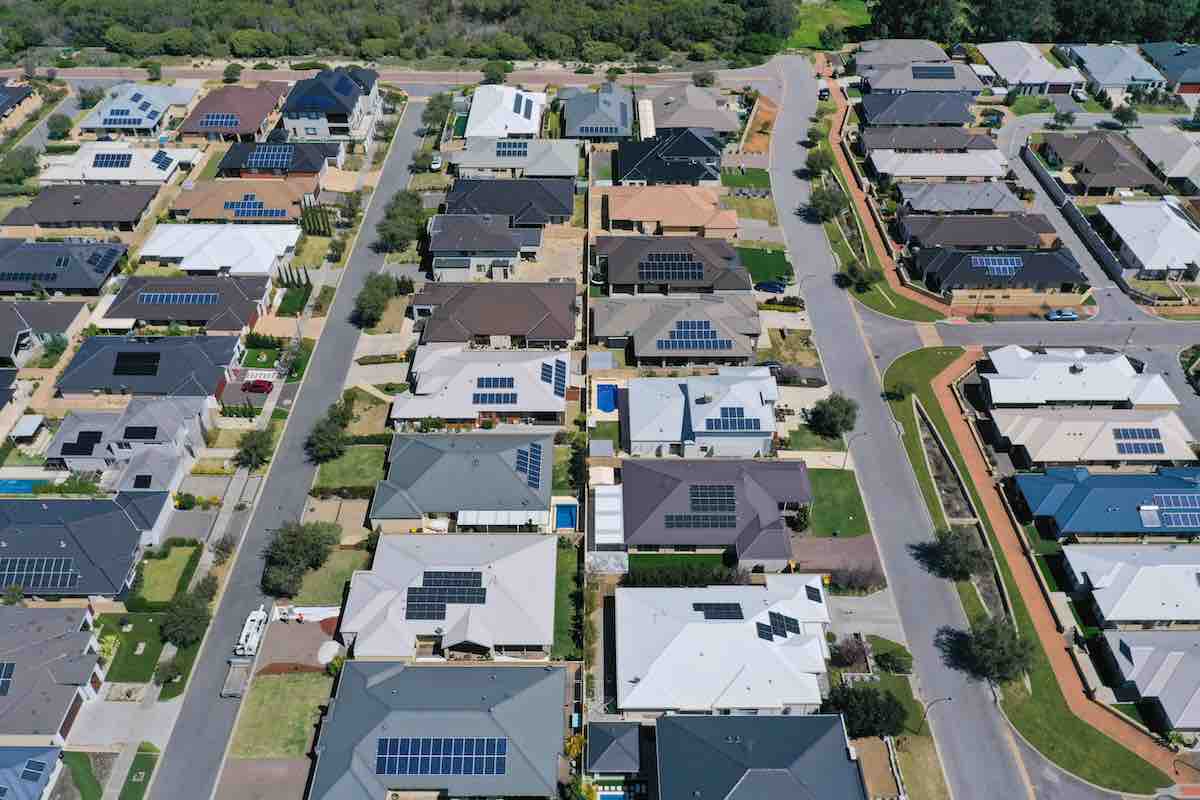The Small-scale Renewable Energy Scheme (SRES), initiated in 2011, provides rebates for householders and small business to install solar panels and other small scale renewable energy systems, including wind and hydro systems, solar hot water heaters, and air-source heat pumps.
Support is in the form of a rebate based on the amount of energy generated or displaced by the solar system. For solar panels the rebate currently covers about $350/kW of the cost.
Despite numerous calls for the inclusion of batteries in the SRES, as of May 2024 no rebates or incentives for small scale battery storage of rooftop solar are provided by the SRES.
The SRES, combined with the various state feed-in tariff (FiT) schemes that reward households for every kWh of excess energy exported to the grid, have been very successful in promoting the uptake of rooftop solar.
Over 30% of households in Australia now have solar arrays on their roofs, the highest take up of rooftop solar anywhere in the world. However, currently only about 8.5% of households with rooftop solar also have battery storage.
It can be argued the SRES and FiT schemes have been too successful, as the excess household power exported to the grid on clear days now often approaches daytime demand and is the major cause of the duck curve grid instability issue.
The duck curve is caused by the cheap excess power exported to the grid during the day, reducing grid demand for higher cost dispatchable energy to low levels and which then needs to be ramped up quickly in late afternoon as sunset approaches to meet evening peak household loads.
AEMO has described the duck curve and the fall of daytime minimum demand to levels that make the grid difficult to manage as one of the biggest challenges of the shift to renewables.
It is well known that the duck curve issue can be solved at the household level by adding batteries that store excess daytime rooftop power for use later in the day, to meet the evening load peak and increase household consumption of rooftop solar.
Without changes that include significant support for household batteries, the SRES and FiT schemes are no longer fit for purpose due to their continued incentivisation of the very high values of excess power being exported by households to the grid.
Without changes to the existing SRES and FiT schemes to provide support for household batteries, the export of excess rooftop power to the grid will continue to grow and increasingly destabilise the grid.
For this reason, utilities have introduced “solar emergency” protocols that either turn down/off the PV inverter or limit export.
To illustrate the duck curve problem and the role of battery storage, I use as an example a household that consumes 20 kWh/day with typical morning and evening load peaks. Figure 1 curve (a) shows the in front of the meter (IFM) load profile of this household with no rooftop solar (power supplied by grid is positive).
Curve (b) shows the effect of adding a 6 kW rooftop array on the IFM power flow during a clear October day in Perth calculated using solar radiation data from NREL (excess power is negative).
The 6 kW array generates ~35 kWh of energy over the day, significantly greater than the daytime household load of around 8kWh, leaving around 27kWh of excess energy for export to the grid during the day. Curve (b) is a good example of the contribution of an individual household with rooftop solar but no battery storage to the duck curve.

Curve (c) shows the IFM power curve after addition of a 13 kWh battery. Adding battery storage has a significant effect on the household IFM power, enabling excess energy in the morning to be stored for use later in the day when the household load peaks. Battery charging starts at 6:40 am when rooftop power exceeds the load.
Once the battery is fully charged (in this example at 11:15 am) no further energy can be stored and the excess power abruptly changes from zero to its value with no battery. A 13 kWh battery was chosen for this example as it equals the usable storage capacity (USC) needed to supply the balance of the household load on this clear day.
Once fully charged, the battery cannot provide a sponge for excess household power subsequently generated in the afternoon. However, this problem can be solved by implementing a suitable battery charging strategy.
It is noted that while a larger battery could store more energy on this day, the extra energy cannot be subsequently used by the household as it would be in excess to the 20 kWh daily household load.
Fig 2, curve (a) shows the effect of battery storage on the yearly energy supplied to the household behind the meter (BTM) with a 6 kW rooftop array. The BTM energy levels out at ≈13 kWh as the USC for household consumption is reached.
In this example a 12 kWh battery supplies 6.7 MWh over the year, equal to ≈ 85% of the household load. This provides a significant saving of household energy cost and a corresponding loss of grid revenue.
For example, in WA energy cost savings calculated using the Synergy Midday Saver TOU (time of use) tariffs for WA show average weekly energy cost savings of $38.6 relative to a house with no rooftop solar or battery. Adding a 12kWh battery to a household with an existing 6 kW array saves $28.2/week.
Although the energy generated for household consumption levels out with increasing battery capacity beyond the USC, it is possible to store additional energy for IFM export to a network during the late afternoon peak load period. The energy available for export equals the energy stored in the battery at the time of export minus any energy reserved for household use.
Curve (b) in Fig 2 shows the effect of battery capacity on the total energy (household + export) use. The total energy does not depend on the energy reserved for household use.

All energy exported to the grid must be balanced. If the battery capacity is less than USC, there is a corresponding increase in backup energy from the grid and no net energy gain to the household. If the battery storage is greater than USC, the exported energy is balanced by a reduction in the excess midday household energy.
Fig 3 compares the effect of battery capacity on the excess energy, with and without battery export to the grid. With sufficient (albeit significant) household battery capacity, export to the grid can eliminate mid-day export of household excess energy to grid.

Fig 3: Effect of battery capacity on yearly excess energy generated by 6kW PV array. (a) no export of battery to grid (b) with export of battery to grid
For a given battery capacity, the maximum energy that can be exported IFM to the grid at the end of the day without reducing the supply of household energy is ultimately limited by the excess energy generated by the rooftop array.
In Fig 4. the effect of battery capacity on export energy is plotted for array sizes of 6 to12 kW. The calculations show that, for a 20 kWh battery, doubling the array size from 6 kW to 12 kW increases the IFM export energy from 1.5 to 2.5 MWh, a 65% increase, while still supplying the household energy.

These calculations show that wide-scale adoption of battery storage by households will significantly increase household energy generation, regardless of whether the energy is exported to a grid or used internally.
For example, in WA if each of the approximately 300,000 householders with rooftop solar (assuming 6 kW rooftop array and 20 kWh daily energy consumption), adding a 13 kWh battery, (about the capacity of a Tesla Powerwall 2) would provide a combined daily household storage capacity of 3900 MWh and, as shown in Fig. 2, more than double the average daily household energy generated with no battery.
With household batteries the energy is generated, stored and consumed behind the meter, obviating the need for expensive grid infrastructure such as high voltage transmission lines that are becoming increasingly susceptible to storm damage. In addition, there would be a 50% reduction of the excess energy otherwise exported to the grid on clear days.
Given the importance of household storage, it is inexplicable why household batteries have not already been added to the SRES rebate. Changes to the SRES need to include both the addition of battery storage to existing household arrays with no storage as well as the addition of array/battery systems to households with no rooftop solar.
The Clean Energy Council (CEC) proposal for a national incentive scheme of up to $6500 per household to install batteries warrants serious consideration.
The CEC states that the scheme can be simply incorporated into the SRES, noting that the existing SRES is legislated and well understood with product and installer regulatory framework that consumers trust. FIT schemes also need to modify their tariffs to provide sufficient incentive for households to export energy during peak load periods.
Paul McCormick FAA is Emeritus Professor at the University of Western Australia






